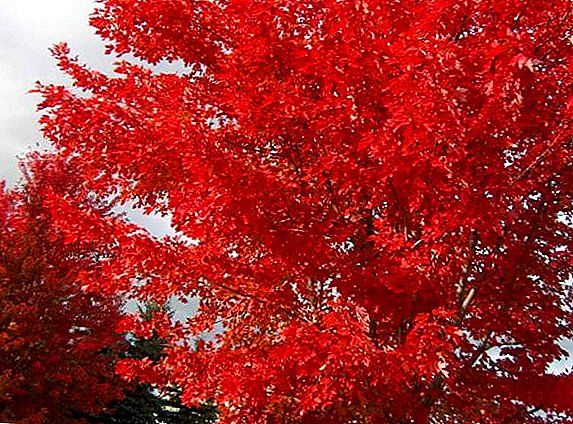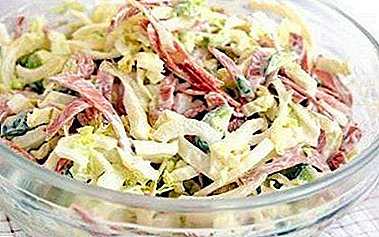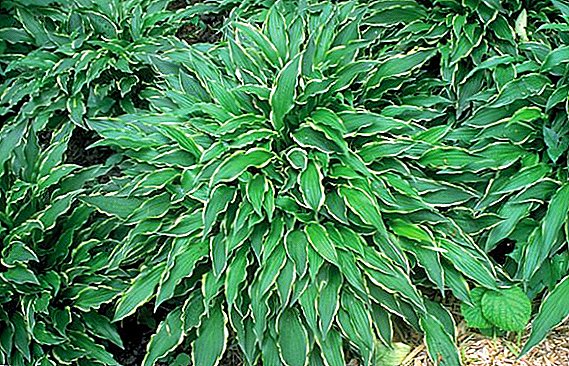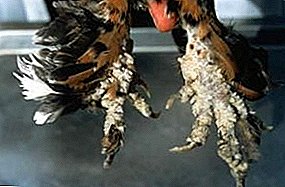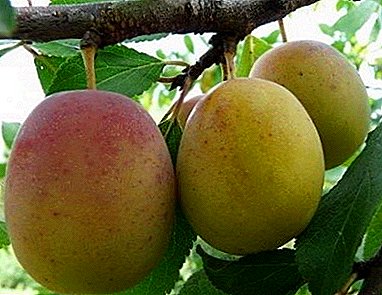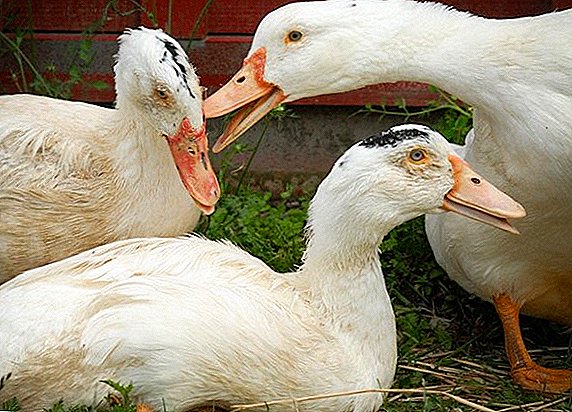 Ducks are one of the most sought-after and most common domestic birds in our area. With all the conditions of detention, they are practically not peculiar manifestations of aggression, not only in relation to their relatives, but even in relation to other species. However, in some cases, these birds can still begin to attack all around indiscriminately and actively pluck each other feathers. In this article we will deal with the reasons for the emergence of such behavior, and we also give approximate algorithms for its return to normal indicators.
Ducks are one of the most sought-after and most common domestic birds in our area. With all the conditions of detention, they are practically not peculiar manifestations of aggression, not only in relation to their relatives, but even in relation to other species. However, in some cases, these birds can still begin to attack all around indiscriminately and actively pluck each other feathers. In this article we will deal with the reasons for the emergence of such behavior, and we also give approximate algorithms for its return to normal indicators.
Possible reasons
There are a lot of reasons why any bird, including a duck, may suddenly begin to show aggression towards its fellows. In this article we will focus only on the most frequent and relevant ones.  Here is a sample list of the most likely causes of such behavior among ducks:
Here is a sample list of the most likely causes of such behavior among ducks:
- various deficiencies and blemishes in the diet (lack of protein, minerals and / or water);
- overfeeding the flock with a variety of wet foods (potatoes, zucchini, pumpkin, cabbage, etc.);
- too drastic and drastic changes in the diet;
- too many ducks with a shortage of space in the house or pleasure yard;
- lack of diverse feeding and watering equipment;
- wrong daylight mode (especially important in winter);
- excessive humidity or dry air in the house;
- the presence of parasitic diseases (pluck feathers themselves);
- the presence in the flock of individuals differing in too aggressive behavior that provoke other, more peaceful ducks.
Did you know? The largest number of ducks is raised in China, where duck meat is very popular. Every year in this country not less than two million of these birds are slaughtered, which equals almost 3/4 of the total world production.
What it can lead to
Among the most common complications resulting from constant plucking of feathers by ducks from each other, it is worth highlighting the development of a variety of infectious complications, infection with parasites (feathers emit a special secret designed to scare away insects), the development of frostbite and heat injuries as a result of direct exposure to temperature factors directly on body of birds, without prior protection of feather cover.  It often happens that at first an innocent phenomenon, even practiced quite rarely, can later turn into acts of cannibalism in a flock. This happens more often when, in addition to plucking the feather, the skin of the bird is also pecked and there is a wound on it, which continues to peck many times.
It often happens that at first an innocent phenomenon, even practiced quite rarely, can later turn into acts of cannibalism in a flock. This happens more often when, in addition to plucking the feather, the skin of the bird is also pecked and there is a wound on it, which continues to peck many times.
The aggressor birds like blood and they begin to peck other representatives more and more often, gradually other members of the pack join this. They find the weakest representative pecked almost on a regular basis, which in the end often ends with the death of the latter and the eating of his corpse by the remaining members of the pack.
Video: duckling wings It often happens that as a result of inappropriate aggression in the form of plucking feathers in young animals by more senior individuals, the physical health and psyche of the former are inflicted fairly significant harm. The worst development is the death of young stock due to a variety of reasons related to the shortage of feather cover. It is also possible that the duck offended at a young age, having matured, will turn itself into a rather aggressive individual, which will also have a very negative effect on the further development of your flock.
Important! With many complications it is very difficult to fight on your own. The treatment of most of them is best left to a qualified veterinarian.
Ways to solve the problem
Accordingly, with the list of main reasons described above, which lead to the problem of pinching feathers by ducks from each other, there is a definite list of actions that is designed to help solve it with minimal losses for your economy. It is possible that the appearance in your flock of a similar problem is the result of a whole complex of reasons at once, and, accordingly, you will have to try a little more to eliminate them. Below we present to your attention a list of the most basic ways to eliminate the problem of pinching ducks to each other. 
Calculate and drop the aggressor
Observe for some time the behavior of your flock as a whole and its individual representatives. You will inevitably note that there is one representative, or a small group of birds, who are the constant instigators of the fights. They can also be identified by constant hissing on others, moving close to living creatures, predatoryly bent forward and down the neck and constantly wings slightly apart.
Having noticed who exactly is the troublemaker, you will need to isolate him forever from the flock, you can - just by slaughtering for meat, or you can - by making a separate pen for him. The latter method is appropriate to apply only if this duck is necessary for you as a parent, has any outstanding parameters, or you plan to use it for exhibitions and further breeding.
Important! If you have succeeded in identifying ducks that are aggressive towards their brethren at an early age, then there is a chance that after prolonged isolation (1-2 months) they will be able to get rid of their negative qualities and again participate in the general life of the herd.
We make adjustments to the diet
If you assume that this problem is due to flaws in the diet of your pets, then you need to take measures that are designed to bring it into an adequate, consistent with the energy needs of ducks, state. First of all, consider whether enough birds get protein. If it seems to you that the problem lies precisely in the lack of protein - increase its quantity in the menu of birds to the required level (50-80 g of protein for each individual).  If this does not have the desired effect, try to reduce the amount of wet food (potatoes, cabbage, rutabaga, zucchini, etc.) to the necessary minimum, which is best set by experience. This will somewhat slow down the natural metabolic processes occurring in the organisms of your wards, make them calmer and significantly reduce the number of conflicts within the pack.
If this does not have the desired effect, try to reduce the amount of wet food (potatoes, cabbage, rutabaga, zucchini, etc.) to the necessary minimum, which is best set by experience. This will somewhat slow down the natural metabolic processes occurring in the organisms of your wards, make them calmer and significantly reduce the number of conflicts within the pack.
It will also be useful for you to learn about the peculiarities of keeping at home such popular duck breeds as ogar, gray Ukrainian, Cayuga, Bashkir, Peking, blue favorite.
First of all, such a diet must be introduced when the ducks are mainly on the pasture type of feeding, that is, in the warm season. If earlier your ducks had a meal that was completely composed only of wet food, try replacing 1/3 of its total volume with shredded grain or mixed feed, and if this does not give the desired effect, gradually increase their mass portion in the diet until the desired results appear.  It also happens that the birds begin to harm their relatives due to the lack of water or macronutrients. Changes in the skeleton structure, loss of feathers, disturbances in the laying and mating processes, as well as other specific changes in the behavior of birds (eating plaster from the walls, digging into the ground in search of small stones, etc.) can confirm the veracity of this hypothesis of duck feathering. ). In this case, it is necessary to fully fill the missing macroelements for the normal functioning of the body. To do this, it is enough to regularly add a little chalk, seashells, lime to the feed, and provide enough water for the birds.
It also happens that the birds begin to harm their relatives due to the lack of water or macronutrients. Changes in the skeleton structure, loss of feathers, disturbances in the laying and mating processes, as well as other specific changes in the behavior of birds (eating plaster from the walls, digging into the ground in search of small stones, etc.) can confirm the veracity of this hypothesis of duck feathering. ). In this case, it is necessary to fully fill the missing macroelements for the normal functioning of the body. To do this, it is enough to regularly add a little chalk, seashells, lime to the feed, and provide enough water for the birds.
It will be useful for you to learn how to make feeders for ducks, nests and a shed with your own hands, as well as how to make various drinking bowls for ducklings with your own hands.
We make good access to drinkers and feeders
Many conflicts in a flock of ducks (especially during the cold season) can arise solely on the basis of lack of free space and access to feeders and water troughs. It is quite natural that each bird in such conditions will tend to take a place closer to the feeder, and if their number or location is not able to adequately meet the needs of the flock, conflicts for the best place will inevitably arise.  In order to avoid the probable development of a similar reason for the appearance of plucking of feathers by ducks from each other, it is recommended to put one trough and a water bowl for every 7-10 members of the pack. In addition, it is necessary to place them in such a way that the birds always have free access to them and do not interfere too much with each other during the meal. To do this, it is necessary to place the drinkers and feeders as far as possible from the walls and doors, at a height sufficient for adequate access of the ducks to food and drink, and in such a way that there is enough space between them to accommodate three birds standing back to back. .
In order to avoid the probable development of a similar reason for the appearance of plucking of feathers by ducks from each other, it is recommended to put one trough and a water bowl for every 7-10 members of the pack. In addition, it is necessary to place them in such a way that the birds always have free access to them and do not interfere too much with each other during the meal. To do this, it is necessary to place the drinkers and feeders as far as possible from the walls and doors, at a height sufficient for adequate access of the ducks to food and drink, and in such a way that there is enough space between them to accommodate three birds standing back to back. .
Learn more about the content of musk ducks: feeding rules and differences between males and females.
Changing the lighting in the house
The most common reason for the inappropriate behavior of birds in winter is the improper organization of daylight hours. There are many parameters that need to be oriented, creating artificial lighting in the house for these birds. First of all it is necessary to remember that the duration of daylight for ducks should be 10-12 hours. And any deviation from these figures in the long run can cause aggression among the members of the pack.  It is also worth paying attention to how bright or dim the light that illuminates the house. It is believed that a normal indicator of illumination, which contributes to the adequate functioning of the body of these birds, is 15 lx. For its formation is usually quite a few light bulbs, with a capacity of 40-60 W, evenly screwed over the entire area of the room.
It is also worth paying attention to how bright or dim the light that illuminates the house. It is believed that a normal indicator of illumination, which contributes to the adequate functioning of the body of these birds, is 15 lx. For its formation is usually quite a few light bulbs, with a capacity of 40-60 W, evenly screwed over the entire area of the room.
Observe the level of humidity in the room
The duck is a waterfowl, therefore it very sensitively reacts to any changes in humidity in the room, both in the direction of its increase, and in the direction of decrease. Her body is rather poorly adapted to function in conditions of sudden changes in humidity (for example, when entering a wet room from a dry, hot street), because from them on the ducks' feathers moist condensate forms, irritating them and not giving the birds proper sleep.
It will be useful for you to learn how to cut duck wings, how to make a barn for ducks with your own hands, how to make feed for ducks, as well as how to properly and quickly pluck a duck at home, than useful duck fat and duck eggs.
To maintain an adequate level of humidity in the room, first of all, you need to hang a hygrometer somewhere in the most convenient place for you - a device for measuring the humidity of the air. Further, being guided by its indicators and indicators of humidity on the street, it is necessary with the help of various methods to try to bring them to a relative match (if it is possible in principle).
For example, you can put a stove or gas boiler inside the house, which would evaporate excess moisture from the room, or alternatively, install a humidifier in the house.  We should also note that in the cold season the humidity in the room with ducks should always remain at the level of 50-60% at air temperatures not lower than + 5 ... + 7 ° С. This indicator provides support for the normal health of ducks, which in turn helps reduce the likelihood of aggressive mood among them.
We should also note that in the cold season the humidity in the room with ducks should always remain at the level of 50-60% at air temperatures not lower than + 5 ... + 7 ° С. This indicator provides support for the normal health of ducks, which in turn helps reduce the likelihood of aggressive mood among them.
Did you know? Whatever acoustic situation a duck doesn’t grunt in - her voice will not produce an echo.
Increase paddock
According to feathery, especially in the process of pasture feeding in the summer, sometimes there is an acute shortage of paddock area, which is why all conflicts arise.
Understand that birds need a larger area for walks can be at the complete absence of all kinds of vegetation on the area intended for walking, the desire at any opportunity to leave the walking yard (especially typical for young animals), as well as the overall increased activity, or on the contrary, lethargy of your wards.  Expansion of the walking yard is best to start in this way, so that in the future it will seize as much fertile land as possible, on which grasses can grow, which are the main source of food for the ducks in the warm season. It is necessary to calculate the area of the future recreational pen so that each adult bird has at least two square meters of area (excluding the places for feeding and drinking).
Expansion of the walking yard is best to start in this way, so that in the future it will seize as much fertile land as possible, on which grasses can grow, which are the main source of food for the ducks in the warm season. It is necessary to calculate the area of the future recreational pen so that each adult bird has at least two square meters of area (excluding the places for feeding and drinking).
Poultry farmers reviews
Tatyana Ptichkina



